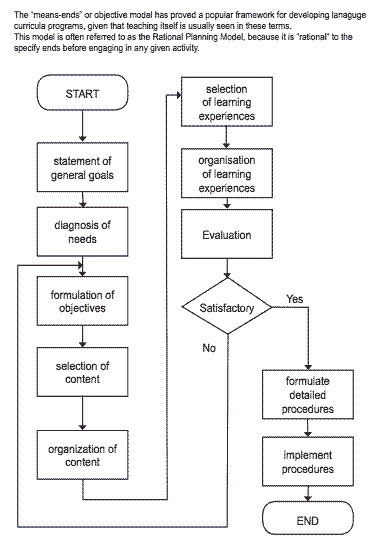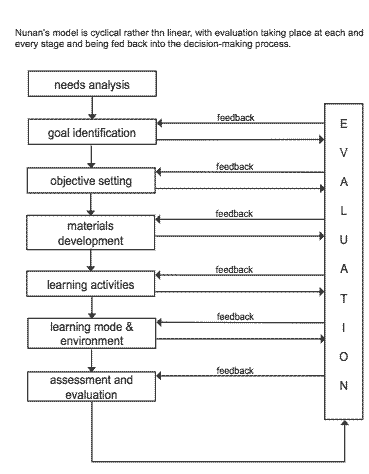Tyler's four-stage progesssion model (1949)
1. Objectives: What educational purpose should the school seek to attain?
2. Content: What educational experiences can be provided that are likely to attain the objectives?
3. Organization: How can these educatioanl experiences be effectively organised?
4. Evaluation: How can it be determined whether the objectives are being attained?
Tyler's Basic principles of Curriculm & Instruction was regarded by many educators as the
early bible of curriculm design. In it, he provided a workable model for the systematic development of curriculla.
However, it was criticised as being an archetypal 'ballistic' model; that is, curriculum
development activity occurs in a linear series of sequential stages.
Also, it was criticised as representing an "ends-means" view of education.
|
|
Taba's model (1962)
Step 1: diagnosis of needs
Step 2: formulation of objectives
Step 3: selection of content
Step 4: organisation of content
Step 5: selection of learning experiences
Step 6: organisation of learning expereinces
Step 7: determination of what to evaluate & means to evaluate
In this early standard model of the curriculum process, there is a sytematic movement
through a series of set steps. However, its rigidity is its chief weakness.
This "means-ends" or objective model has proved a popular framework for developing lanaguge
curricula programs, given that teaching itself is usually seen in these terms.
This model is often referred to as the Rational Planning Model because it is "rational" to the
specify ends before engaging in any given activity.
|
|
[
p. 35
]
A hybrid Taba-Tyler model (19**)

[
p. 36
]
Nunan's model (1985)

Return to Main Article
 Appendix 1
Appendix 1
|

